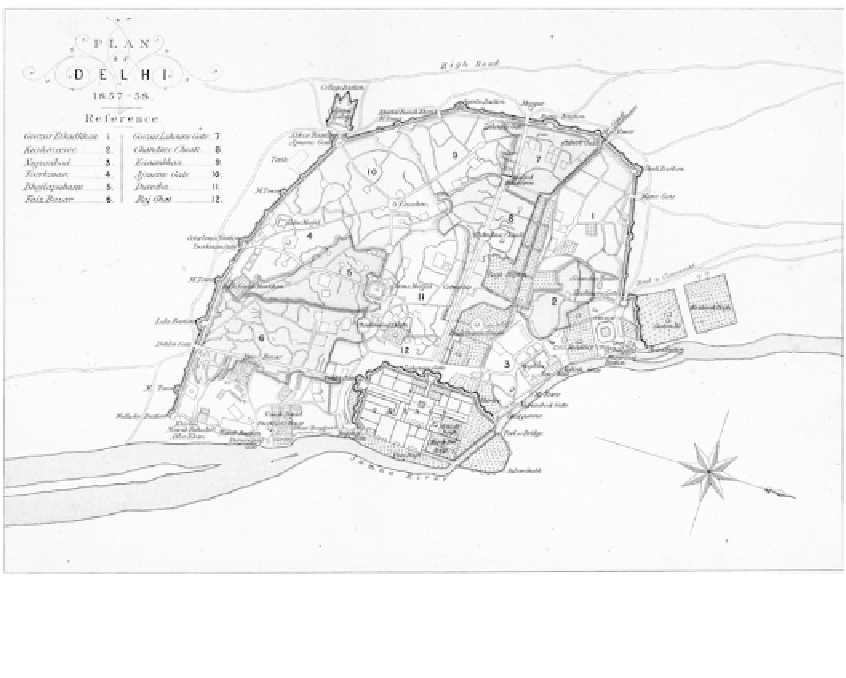Environmental Engineering Reference
In-Depth Information
Delhi is located on the River Yamuna (a tributary of the River Ganges) and has been con-
tinuously inhabited since at least the sixth century
BC
. It is the site of many important ancient
as a political, cultural and commercial city and as centre of trade routes in northern India and
wider Asia. It has served as a capital of kingdoms and empires and has been invaded, ransacked
and rebuilt many times. The urban area, best described as polycentric, is effectively a cluster
of many cities spread across the wider urban area. The 'transport' rationale shaped the location
and growth of the city: in 1639 the walled city was built as the capital of the Mughal
Empire (1526-1857), which at the height of its power (around 1700) controlled most of the
Indian subcontinent, extending from Bengal in the east to Balochistan in the west, Kashmir
in the north, to the Kaveri basin in the south, and covered a population of between 110 and
150 million.
Delhi became the capital of India, superseding Kolkata, under the reign of George V in
1911, part of the British Raj (the colonial rule of India from 1858 to 1947). New Delhi was
built as the new capital city in the 1920s; the foundation stone of the city was laid in 1911.
It was planned by Sir Edwin Lutyens and Sir Herbert Baker, two leading British architects
of the time. New Delhi is known for its wide, tree-lined boulevards, of a very different style
to the rest of Delhi, and is home to many national institutions and landmarks. Connaught
Circus echoes Place de la Concorde in Paris, providing a central monument or display for the
Figure 5.5
Plan of Delhi 1857-58, engraved by Guyot and Wood, published by William Mackenzie, Edinburgh,
c.1860 (coloured engraving), English School (19th century).
Source
: Private collection/The Bridgeman Art Library.


